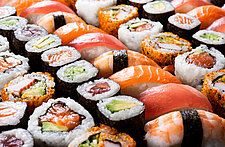Once again, we have found through our panel testing that geographic proximity is no indication of similar preferences in terms of flavors and fragrances, especially as relating to concepts of fresh taste and “freshness” in general. We have seen this in the U.S. versus Mexico, for example, and we will see this in Japan versus China. China, of course, is a massive market with regional cuisines, dialects, climates, music, cultures and many other aspects that set it widely apart from Japan. Though we are sure this sounds as though a continuous loop recording, when developing a fragrance and flavor profile for a product for any market it is unwise to assume that one profile for all markets is sufficient.
Freshness in China
China is largely a poor country; a country in development and a country with a collective aspiration for modernity and respect. It is not surprising therefore, that for our Chinese panelists “everyday freshness” divided into both personal hygiene and nature references. We sometimes tend to forget the luxury that is represented by clean water and sanitation. Personal hygiene/personal care included brushing teeth, showering, first glass of water in the morning, morning exercise, washing and even flushing toilets. More natural allusions included rainbows, waterfalls, morning dew, fresh air and sunshine, bamboo forests and fresh fruits.
We then asked panel members to imagine themselves on a “Freshness Planets.” What might the Chinese people imagine would be on these planets in terms of flavors, colors and settings? Three planets emerged with somewhat overlapping elements that we shall combine into one area.
A Chinese planet of freshness
Setting – Interestingly though the freshness settings differed on the planet, e.g. New Zealand, Brazil, Africa, South America, what they all represented was fresh air, clean, forest smells, nature and green.
Colors – Greens and forest greens were common, ocean blue, “clear,” blue and orange.
Flavors and Fragrance – Green tea colors and fragrance, lemon trees and citrus were common, along with mint.
Other sensations – Chinese panelists also described other sensations associated with freshness; fizzy, cooling, watery & juicy, transparent, something to share with friends.
Deeper Elements of Freshness
What are the deeper sensorial elements Chinese consumers correlated with “freshness?” After the panel members identified various planet elements, they were able to “drill down” to identify specific attributes that represented the crystallization of fresh taste:
In terms of color, freshness is perceived in terms of blue, white (clear) and blue-green. There is a texture (mouth-feel) to freshness is similar to crunchy, filled candies that is fizzy and “alive.” Whatever the form, consumers wanted a cooling sensation with a flavor intense, strong flavor. They like their fresh aroma to be strong; to announce that it is fresh. Examples of fresh flavors include peppermint, mint, citrus, wintergreen, floral and green.
Chinese consumers were even specific about the elements found in their packaging to typify freshness. Images included ice cubes, mint leaves, blue sky, white clouds, bubbles (=fizzy) and snow-capped mountains. Overall packaging color was favored to be in “cool colors” reflective of color perceptions shown above.
The important message in the Chinese research is that it markedly varies from the Japanese study. While this might sound like an obvious point, it is a call for vigilance. Marketing to a region as vast as Asia is not a task to be taken in a superficial manner, but requires a country by country consumer analysis especially in situations where a flavoring system is employed in any food or beverage introduction.




